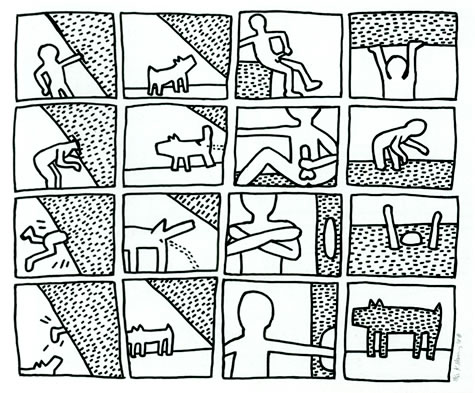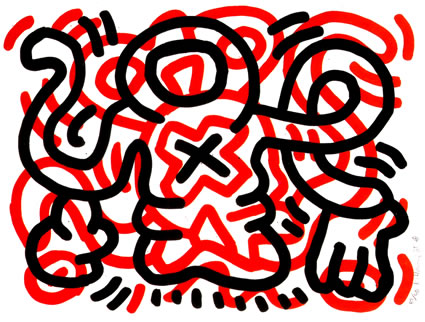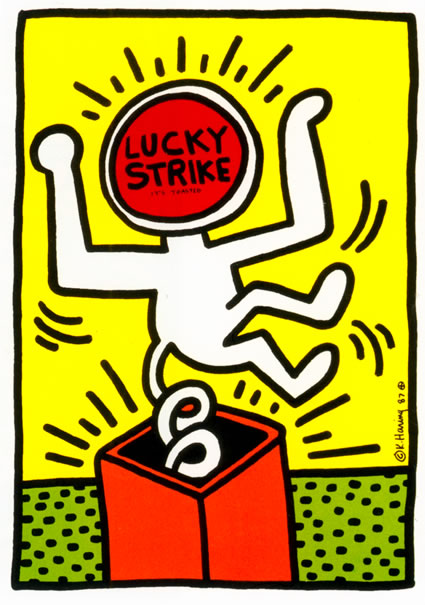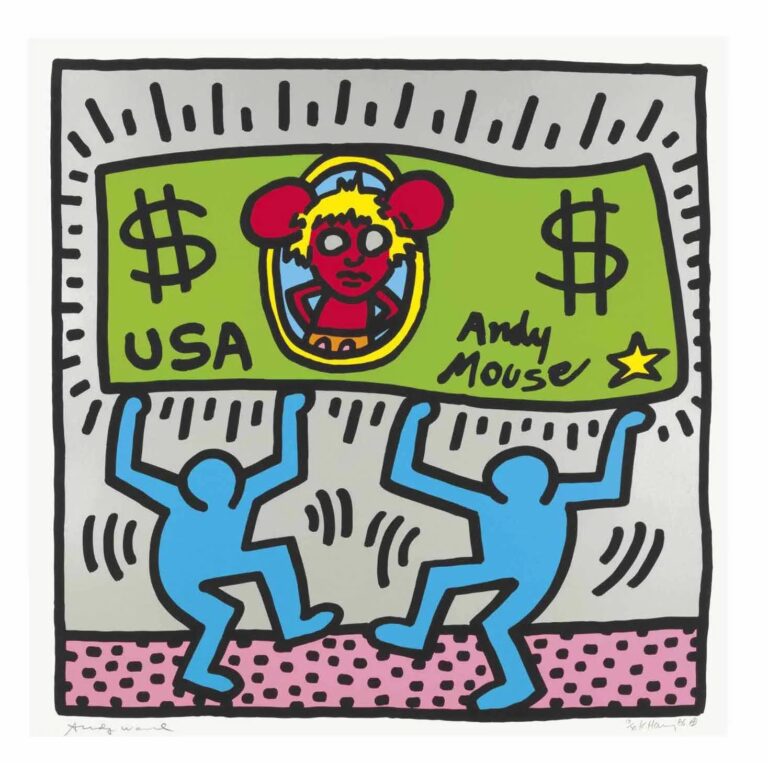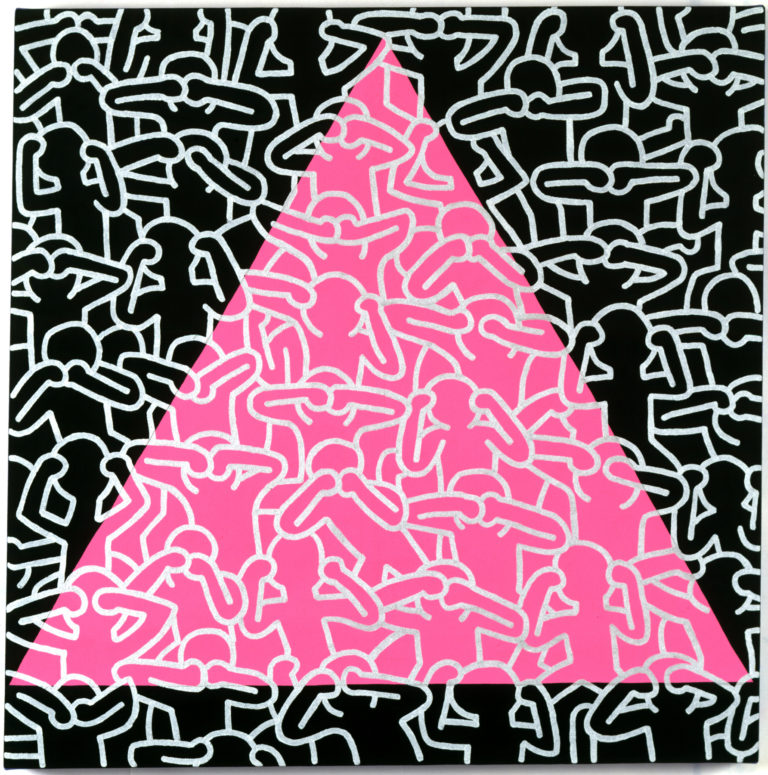Keith Haring’s Blueprint Drawings (16) weaves a complex narrative through its 16 sequential, comic-book-style frames, inviting a layered interpretation of the events it portrays. Central to the series’ ethos, it underscores the haunting impact of the AIDS epidemic, set against the backdrop of 1980s New York City—a city grappling with social, political, and health crises.
In the initial frame, a faceless human figure, representative of the anonymity and taboo of the era, reaches into a wall speckled with short lines—Haring’s symbolic nod to the pervasiveness of the HIV/AIDS virus. As the sequence progresses, the wall consumes the figure, evoking the engulfing and inexorable nature of the disease. By the fourth frame, only a foot remains, drawing the attention of a curious barking dog, a symbol of an ignorant, oppressive government.
The subsequent frames shift focus to another male figure, poised on a virus-dotted block, evocatively holding his erect penis. This scene mirrors the next, emphasizing a cycle of sexuality, vulnerability, contemplation, and action. As the series progresses, figures are seen wrestling with their choices, engaging with the virus-laden structures, and confronting the entrapments of their environment.
The last column narrates a stark descent, with a figure gradually sinking into a ground permeated with the virus, reminiscent of the engulfing wall. Ultimately, in the concluding frame, a dog, typically emblematic of oppressive forces, stands clear of any encumbrance but is internally riddled with the disease’s markings.
Haring’s Blueprint Drawings (16) encapsulates the human experience—of temptation, vulnerability, and inevitability—during a deeply tumultuous period, casting shadows of past decisions on future outcomes.

